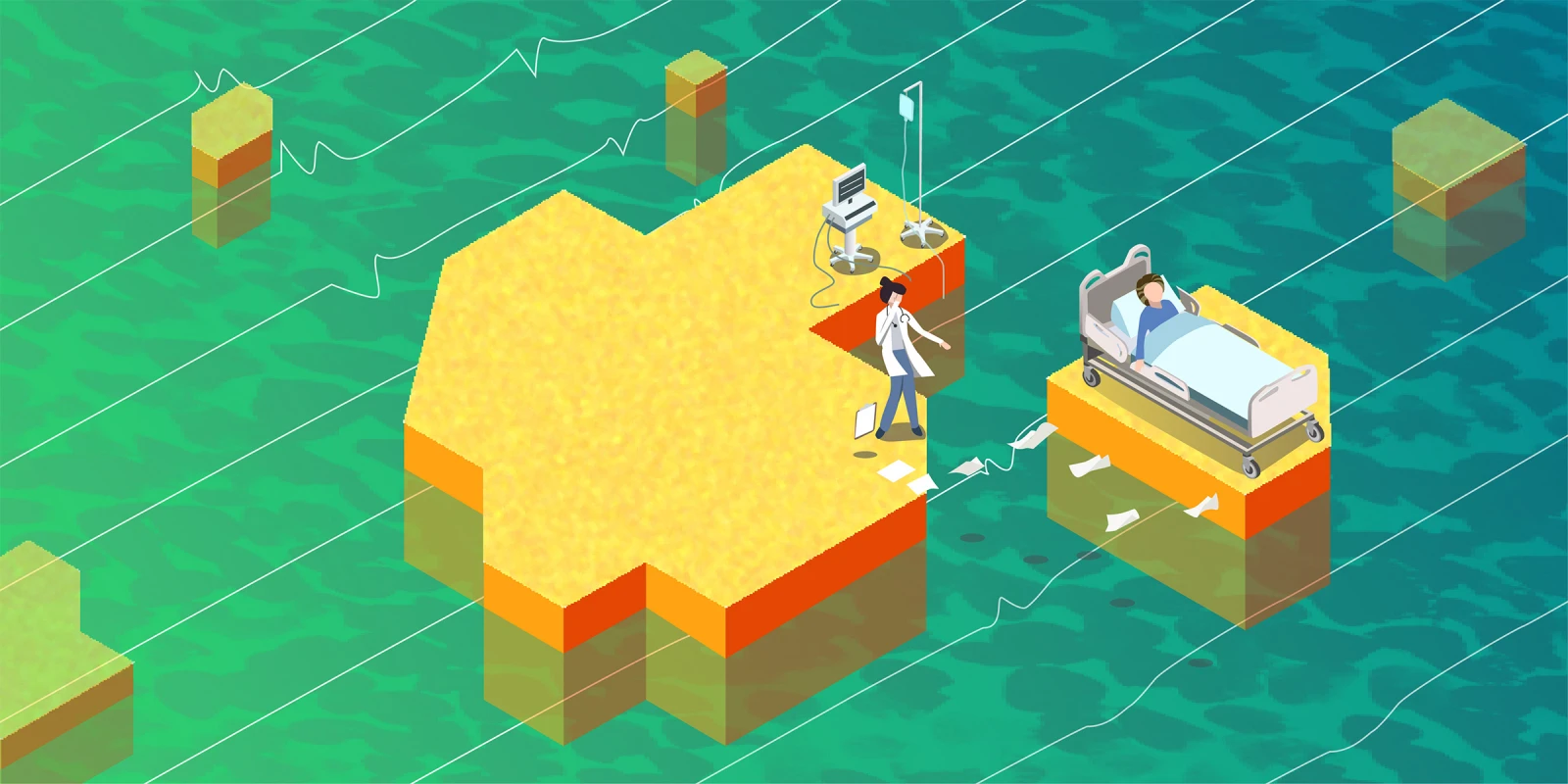"People need primary care but not necessarily a physician relationship," said the CEO of a multibillion dollar health care system, with 30 years of experience in health care, when asked, "What's one conviction in health care that needs to be challenged?"
As a physician and patient, I find this stunningly insulting and downright dangerous to hear, especially from someone with a significant influence on the future direction of U.S. health care.
No doubt this is a brilliant business idea — that is, to remove physicians from their role in guiding patients through wise medical decision-making, thus allowing hospitals to sell services directly to patients, as anxious and incompletely informed "consumers."
Around the same time I came across this interview with the CEO, I also found this question posed by a Goldman Sachs analyst: "Is curing patients a sustainable business model?" This was said in the context of an analysis of the implications of definitive curative medications driving down the prevalence of Hepatitis C, thus impeding the ability of more people to become infected (e.g., potential consumers).
I was delighted to find that both the CEO and the analyst had said the quiet part out loud, confirming what has been, or should have been, obvious to all of us: Dollar-driven decision-making rather than patient-welfare-centered decision-making is ascendant. Plus, now I no longer had to feel like a paranoid conspiracy theorist!
However, what frightened me even more deeply than the comments from the CEO and the analyst was the realization that they were apparently so secure in the status quo that they were not reluctant to call attention to these otherwise appalling conclusions.
The patient-physician relationship is rapidly being converted into a more expensive and less effective consumer-provider model. Dollar-driven decision-making has severely restricted the time required for patients and their physicians to establish more fully informed and trusting "partnerships," as care becomes increasingly tied up in the bottom line.
So, what will happen when the patient-physician relationship falls by the wayside?
Forming those more meaningful relationships has been repeatedly proven to assist patients in becoming more knowledgeable about, more engaged in the planning of, and subsequently more adherent to, mutually agreed upon treatment plans. Multiple medical studies highlight that this, in turn, results in lower mortality rates.
Business concepts like "productivity," "consumer-driven wants," and "the customer is always right" have no place in health care and act as barriers to getting the right treatment to the right patient at the right time. Some patients are clearly getting too much health care, while others face insurmountable difficulties accessing the health care system equitably, resulting in just 5% of all patients accounting for half of the country's health care spending in 2017. Of this population, the top 1% (as ranked by their health care expenditures) accounted for 22% of total health care spending, and the bottom 50% represented just 2.9% of total health care spending.
We need to find a middle ground between the health care paternalism of the past and the deceptively appealing consumer model propping up the false notion that health care can be safely approached as a DIY project. In fact, we need to have both the benefits of high-tech medicine and the intrinsic healing connection of both high-touch and high-talk medicine.
It is only through a trusting and mutually respectful one-on-one patient-physician relationship that we can safely navigate the vagaries of modern health care. We therefore need to incentivize primary care for both patients and physicians alike. This will help address the estimated 30% of U.S. health care costs that are “unnecessary and wasteful," the nearly one-third of prescriptions that go unfilled (while half of the filled ones are improperly taken), and the U.S. health care literacy rate of just 12%. Patients should not be too quick to reject medical advice simply because they don't understand it. Physicians and patients alike must put in the time and effort to learn and understand together the condition or illness at hand.
There was a time when the relationship between the patient and physician was all that we had, because there were limited or no science-based, effective, diagnostic, or therapeutic interventions available. The nonscientific interventions that we jointly resorted to were at times harmful, and at other times clearly therapeutic. We now acknowledge that humans are a complex biopsychosocial species. With that understanding, we must stop trying to shoehorn biopsychosocial problems into a narrow, strictly biomedical model, and instead incorporate psychological, environmental, and social factors into our practice.
It is reasonable that as we learned more about the causes of and treatments for diseases, patients would become less exclusively reliant on their relationship with their doctor. However, it is not at all understandable why we would consciously choose to enfeeble this relationship within the therapeutic armamentarium. We are all suffering from the unintended side effects of that poor choice. I believe that we can and should promote a dialogue on how we, both medical and nonmedical individuals alike, might reassess the direction in which medicine is heading.
How would you start the conversation around where medicine is heading?
Drew Remignanti, MD, MPH, writes from the dual perspective of a 40 year career emergency physician and of a 50 year career chronic autoimmune disease patient. He considers himself well educated by Dartmouth College, Rutgers Medical School, the Medical College of Wisconsin, as well as 15 hospitalizations, seven abdominal surgeries, and a major disabling stroke in 1982 at age 38. He is the author of The Healing Connection: A Partnership for Your Health.
Previously published in MedPageToday.
Illustration by Yi-Min Chun







